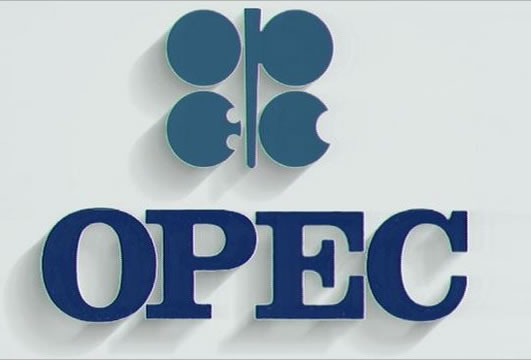
OPEC is heading for tougher-than-expected policy talks this week as its leader Saudi Arabia pushes to extend oil output cuts by nine months while non-member Russia is hesitating on the curbs’ duration due to worries that the market could overheat. “It will not be an easy meeting and we always look at various scenarios,” United Arab Emirates Energy Minister Suhail bin Mohammed al-Mazroui said on Tuesday in Dubai before leaving for the OPEC gathering in Vienna.
The Organisation of the Petroleum Exporting Countries, Russia and nine other producers are cutting oil output by about 1.8 million barrels per day until March 2018, and on Thursday will discuss extending the deal. The market had largely expected OPEC to prolong cuts until the end of 2018 but doubts have emerged in the last few days. Saudi Arabia has signalled that it wants oil to trade at about $60 a barrel as the kingdom prepares to list shares in national oil champion Aramco and is fighting a large fiscal deficit. The Russian government also wants high oil prices ahead of a presidential election in March 2018. But officials in Moscow have voiced worries about pricier oil boosting the rouble, which could undermine the competitiveness of Russia’s economy.
As oil rallied above $60 per barrel, U.S. producers aggressively hedged their future production, raising fears of another spike in shale output in the United States, which is not participating in the global production curbs. Goldman Sachs, one of the most active banks in commodity trading and oil producer hedging, said on Tuesday in a note the outcome of the OPEC meeting was uncertain as Brent oil had risen above $63 per barrel.
“The push for a nine-month extension, four months before the cuts end and given an accelerating rebalancing further stands in the face of prior comments that the cuts should remain data-dependent to assess their effectiveness,” the U.S. bank said.
Citi, one of Goldman’s main rivals, said it expected major producers to end production cuts sooner rather than later. “OPEC and Russia will both realise they are losing market share and they will be better off going back to a more competitive environment,” the head of commodity research at Citi, Ed Morse, told Reuters. U.S. oil prices fell more than 1 percent on Monday and eased further on Tuesday from a two-year high reached last week. Goldman said oil might fall further this week as the market had priced in a nine-month extension.
“We continue to expect a gradual ramp up in OPEC and Russian production from April onward,” Goldman said, adding “as a result, the announcement of an only six-month extension would still initially appear bullish relative to our expectation”. On Friday, Russia said it was ready to support extending the output-cutting deal but had still to decide on the duration. On Monday, Reuters reported that a major Russian production project led by Exxon Mobil was preparing to ramp up output by a quarter from next year. The project is not subject to the global output-cutting deal but the development would signal an obstacle to Russia’s efforts on production curtailment.
The Exxon project involves Rosneft, the Kremlin-owned state producer whose boss Igor Sechin, a close ally of President Vladimir Putin, has long been a critic of Moscow’s deal with the 14-country OPEC. Sources close to talks between OPEC and Russia told Reuters Moscow wanted to fine-tune the language of the deal to include an option to review the agreement if global stocks fell steeply. The supply pact is aimed at reducing oil stocks in industrialised countries to their five-year average. The latest figures suggest OPEC is more than halfway there, with OPEC sources saying the target could be reached after June 2018. Fatih Birol, head of the International Energy Agency, which advises industrialised nations on energy policy, told Reuters he expected the market to tighten towards the second half of 2018 due to robust demand.

